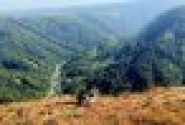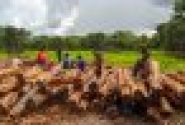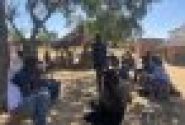
Elinor Ostrom, the 2009 Nobel Prize winner for economics, is spearheading an interdiscpilinary approach to forest conservation
By Angela Dewan
As CIFOR’s Director-General Frances Seymour pointed out on Tuesday in her keynote speech, there will often be case studies to prove one point, and other case studies to prove another. Scientists are pressured by decision-makers to come up with conclusive answers fast, putting at risk some of the word’s most vulnerable resources.
The complex issues of forestry will require a complex response, according to Elinor Ostrom, the 2009 Nobel Prize winner for Economics.
“There are no panaceas,” Ostrom said today in her keynote address.
“These are complex systems. Some people want to give up and say it’s too complex, but what we’re trying to do is dig in a look at complex nested systems so we understand them better over time.”Part of the complex response required will involve a greater interdisciplinary approach to forest conservation. The University of Michigan’s International Forestry Resources and Institutions (IFRI), in which Ostrom is involved, has engaged experts in science, social science, economics and ecology, among others, from different nations to conduct ground-level research into forests in Latin America, Africa and South Asia.
“No single discipline has a monopoly on knowledge. We need to build interdisciplinary teams rather than projects,” Ostrom said.
What IFRI found from satellite imaging was that government protection of parks were not necessarily effective.
IFRI’s study of forest plots in Uganda showed that the rate of illegal activity, such as pit-sawing and grazing, was 20 percent on private land. It was 15 percent on government land where indigenous communities live, and 66 percent in government forests that relied on government officials for monitoring.
“This shows that there are other processes at play,” Ostrom said.
The team found a much stronger statistical relationship with regular monitoring and forest density. Because imposing sanctions for illegal land use had little effect, community monitoring proved to be the best option.
“The best arrangement is to have government-run forests but allow communities to take resources, generally non-timber forest products, in return for monitoring activities in the forest,” Ostrom said.
Part of building a system of community monitoring for forest conservation is ensuring community members are united and understand that they have the same interests. “When people in communities do not know each other well, they are much more likely to overharvest,” Ostrom said.
Ostrom called for experts and decision-makers to collaborate and consider these complexities when planning forest management, rather than sticking to top-down approaches.
“Different experts don’t even speak the same language,” Ostrom said.
“We are trying to develop a broad language that crosses disciplines, so we can slowly but surely develop a nested language that is able to address the complexity both on the ecological side, but also on the social side. I see this as a 50 to 100-year project to really do it, but at least we’ve started.”
We want you to share Forests News content, which is licensed under Creative Commons Attribution-NonCommercial-ShareAlike 4.0 International (CC BY-NC-SA 4.0). This means you are free to redistribute our material for non-commercial purposes. All we ask is that you give Forests News appropriate credit and link to the original Forests News content, indicate if changes were made, and distribute your contributions under the same Creative Commons license. You must notify Forests News if you repost, reprint or reuse our materials by contacting forestsnews@cifor-icraf.org.












